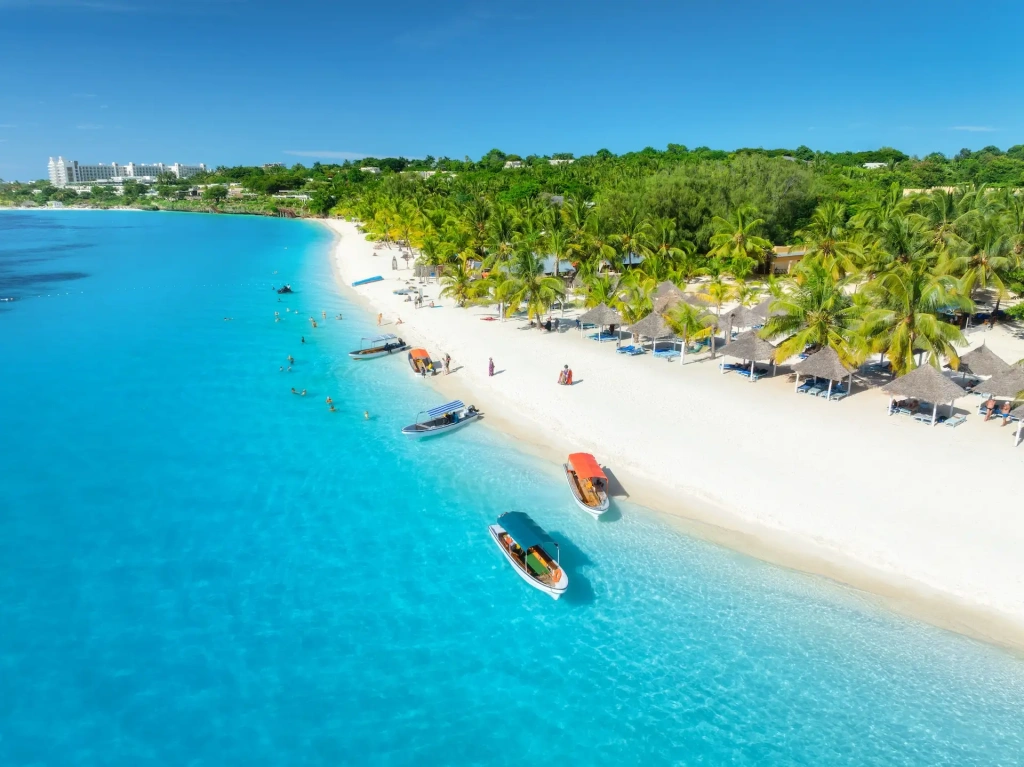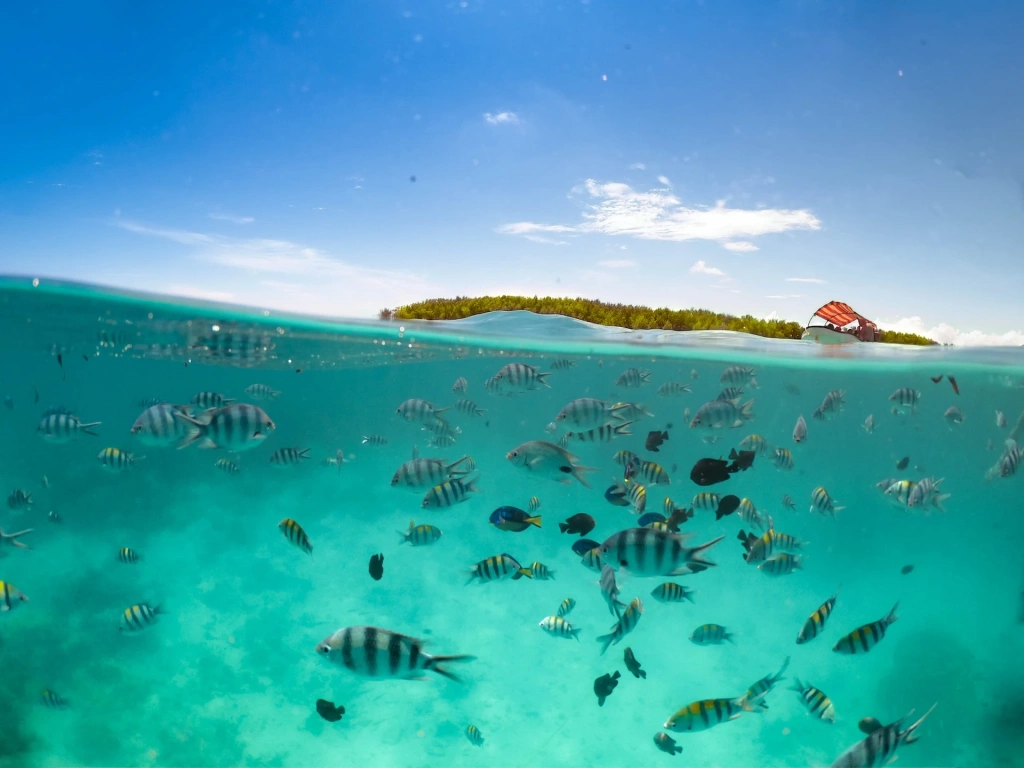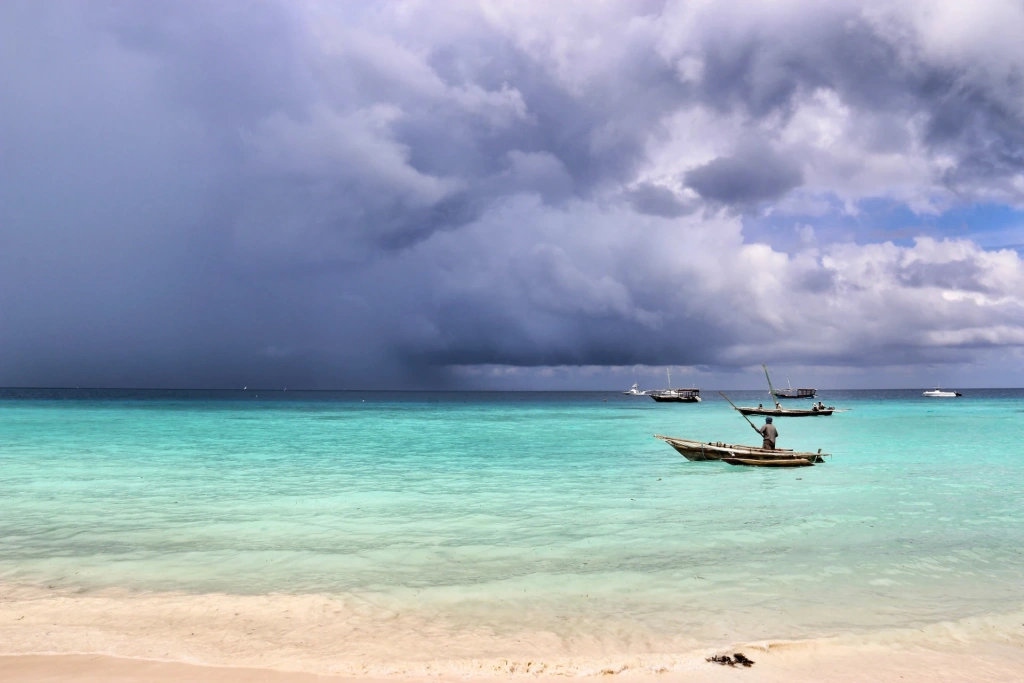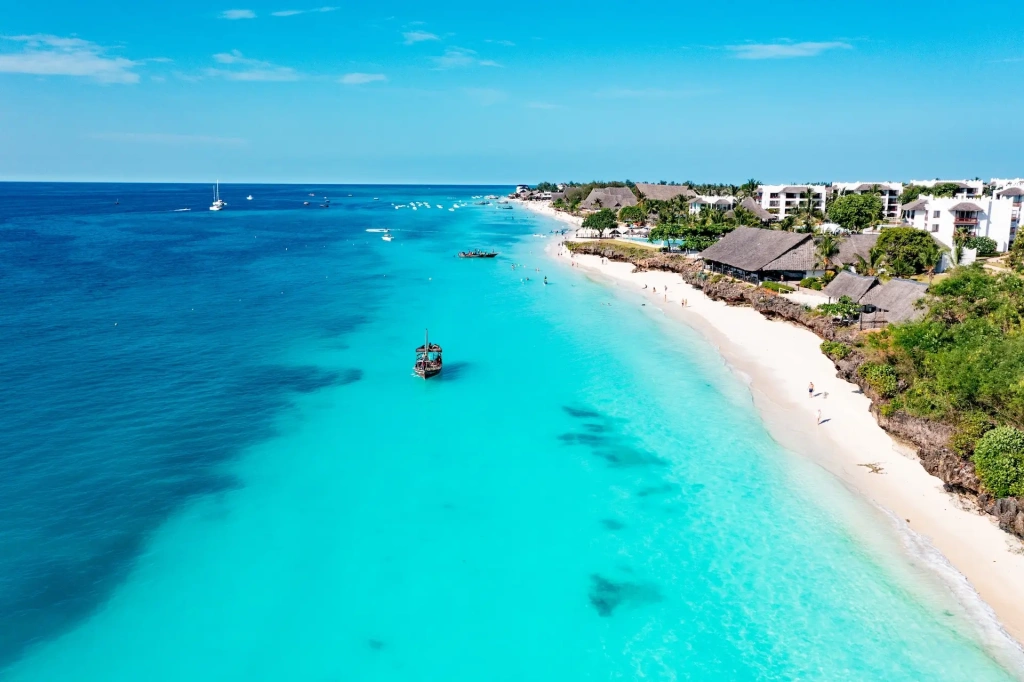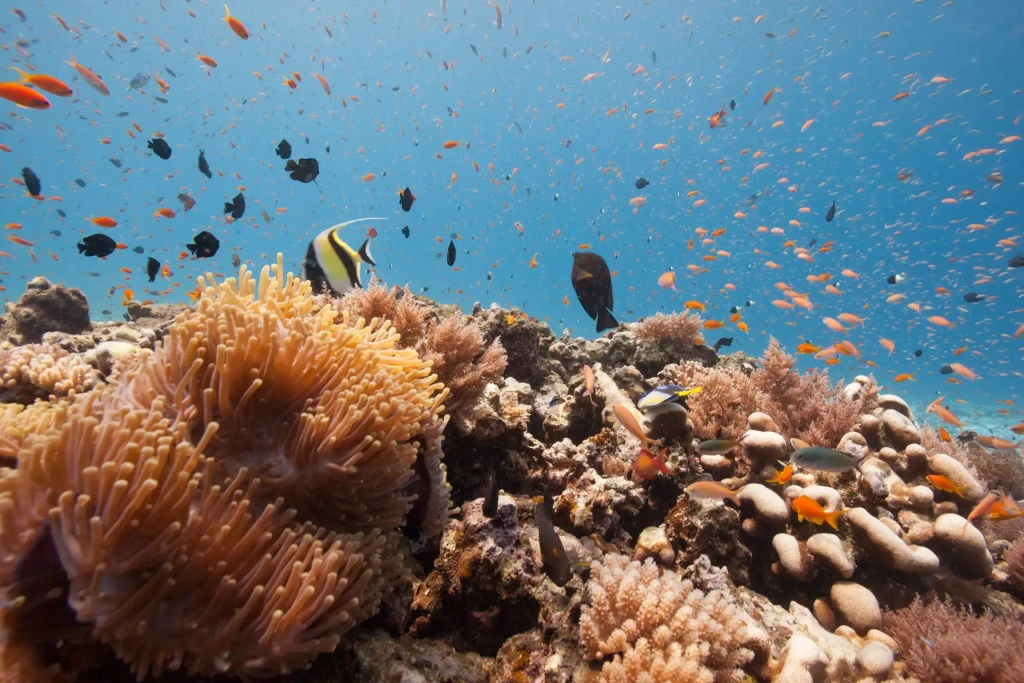The best time to visit Zanzibar is from June to October. This is the dry season in this part of Africa: the days are warm and sunny with little to no rain. Temperatures are also more comfortable than in January or February. During this period, many travelers head to Tanzania to witness the Great Migration in Serengeti National Park. Since Zanzibar is part of Tanzania, it’s easy to combine a beach vacation with a Tanzanian safari adventure.
Zanzibar has a tropical climate shaped by monsoon winds. This means the temperature doesn't vary much throughout the year: from a daily average low of 26°C (79°F) in August to a high of 29°C (84°F) in February. However, the monsoons significantly affect rainfall, bringing two rainy seasons: March to May and November to December.
Zanzibar weather month by month: average temperatures & rainfall
Zanzibar in January–February: hot and dry
The beginning of the year is a popular time to visit Zanzibar. The weather is hot and dry: the short rainy season has usually ended, and daytime temperatures reach 30°C (86°F) or even higher. Over the Christmas and New Year holidays, the island is bustling with tourists, and hotels and beaches are busy.
January and February are excellent months for diving, especially around Mafia Island. The coral reefs are teeming with life — from reef fish to whale sharks and sea turtles — and the water is exceptionally clear. Snorkelers also love this season. The lagoons are clean and perfect for spotting colorful fish and starfish. Many visitors take boat trips to the small island of Mnemba to snorkel there.
Check out the best diving sites in Tanzania and plan an unforgettable underwater adventure off Africa’s coast. Take advantage of this still-undiscovered gem before it becomes too crowded.
Zanzibar in March–May: long rains
Starting in mid-March, clouds begin to gather and northeast monsoon winds blow in. Humidity increases, but the air stays hot, often above 30°C (86°F). April brings afternoon thunderstorms and long, heavy rains to Zanzibar’s coast. In just this one month, rainfall can exceed the total precipitation from June to October. The ocean becomes murky, and diving season comes to an end.
Some hotels temporarily close in April and May due to the low number of guests. Others offer great discounts, attracting travelers looking for quiet, budget-friendly vacations. We don’t want to dissuade anyone from visiting Zanzibar during April or May — the islands have their own beauty at this time. The landscapes turn lush and green, the skies are dramatic, the ocean looks powerful, and sunrises on the eastern coast are spectacular. Still, if you don’t enjoy rainy weather, it’s best to avoid these months.
In April and May, usually crowded Stone Town becomes more relaxed and quiet — ideal for cultural tours. If you prefer a more active vacation, check out our guide to the top activities in Zanzibar. From the historic Stone Town to all kinds of excursions and trips, the main island offers plenty of things to do at any time of the year.
If you’re a beach lover, it’s helpful to know how tides work on Zanzibar’s beaches so you can plan your day accordingly. Don’t miss our selection of local dishes worth trying while you’re there. We’ve also prepared a special packing list for beachgoers headed to Zanzibar.
Zanzibar in June–October: the perfect season
By June, the heavy rains are over, and Zanzibar enjoys dry, sunny beach weather. This continues until mid-October. Visitors take full advantage of relaxing beach days, snorkeling, and spice plantation tours. Foodies will also enjoy the numerous restaurants on Zanzibar that serve fresh seafood and fish caught daily. The best Zanzibar beaches, Nungwi and Kendwa, welcome many guests during this period. Those seeking adventure can enjoy diving or kitesurfing.
At the same time, many travelers head north to mainland Tanzania, where massive herds of animals migrate across crocodile-filled rivers while evading predators. This is the most thrilling stage of the Great Migration of wildebeest and zebras. For many, combining a Zanzibar beach vacation with a Serengeti safari is the ultimate African travel experience — and they’re not wrong.
Zanzibar in November–December: short rains
In November, the Indian Ocean warms up, and northeast monsoons bring short, light rains that usually last until Christmas. These showers are brief and mostly occur in the afternoon. During this period, and swimming, while afternoons are ideal for meditation, yoga, spa treatments, or visiting local bars.
In December, diving enthusiasts flock to Tanzania’s islands, especially to tranquil Mafia Island. The nearby waters offer an unforgettable chance to observe marine life. Snorkelers may even spot majestic whale sharks, and the lucky ones might catch a glimpse of migrating humpback whales. We recommend choosing the most responsible dive operator on Mafia — Kitu Kiblu.
By Christmas, daytime temperatures in Zanzibar reach 29°C (84°F), with peaks of 33–34°C (91–93°F). Rainfall typically ends. It’s worth noting — and important to remember — that the hot, dry season usually begins in mid-December and continues until mid-March. As a result, Zanzibar’s hotels are fully booked during Christmas and New Year holidays. If you’re planning to visit during this time, make sure to book your accommodation and flights at least six months in advance.
Choose the season that suits you best and head to the warm, sunny islands of Tanzania. We hope your vacation is absolutely perfect!
All content on Altezza Travel is created with expert insights and thorough research, in line with our Editorial Policy.
Want to know more about Tanzania adventures?
Get in touch with our team! We've explored all the top destinations across Tanzania. Our Kilimanjaro-based adventure consultants are ready to share tips and help you plan your unforgettable journey.















